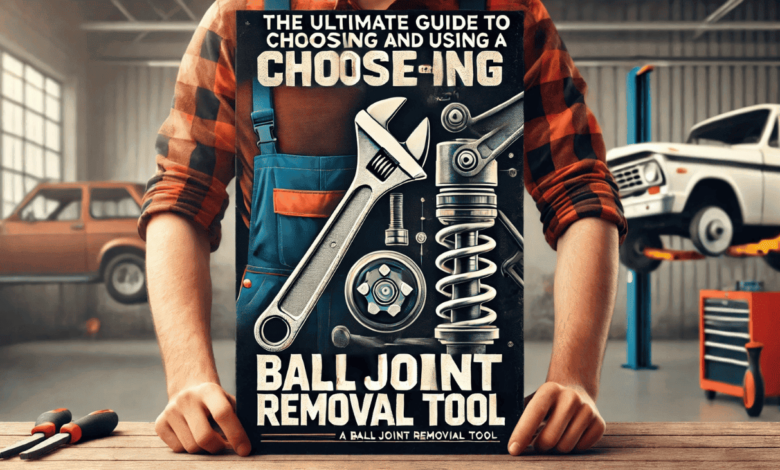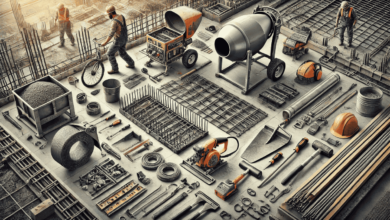The Ultimate Guide to Choosing and Using a Ball Joint Removal Tool

When it comes to maintaining or repairing a vehicle’s suspension system, one of the most challenging tasks is removing the ball joints. A ball joint removal tool is an essential piece of equipment that makes this process easier, safer, and more efficient. Whether you’re a professional mechanic or a DIY enthusiast, having the right tool ensures that you can remove ball joints without damaging other suspension components.
What is a Ball Joint Removal Tool?
A ball joint removal tool is a specialized tool designed to extract ball joints from control arms, steering knuckles, or suspension systems without causing unnecessary strain on other vehicle parts. Using the wrong tools, such as hammers or pry bars, can lead to costly damage and prolonged repair times. Instead, a ball joint removal tool provides a precise and controlled method for this job.
These tools are commonly used in automotive workshops and by DIY mechanics for tasks such as replacing worn-out ball joints, conducting suspension repairs, or upgrading vehicle components. The right tool ensures that the process is smooth and prevents unnecessary wear and tear on other suspension parts.
Types of Ball Joint Removal Tools
There are several types of ball joint removal tools available, each designed for specific types of vehicles and suspension systems:
Ball Joint Press Kits
These are heavy-duty tools designed for press-fit ball joints. They come with various adapters to accommodate different vehicle makes and models. Ball joint press kits are ideal for trucks, SUVs, and larger vehicles with tightly fitted ball joints.
Forked Ball Joint Separators (Pickle Forks)
Pickle forks are wedge-shaped tools used to separate the ball joint from the control arm. They work by applying force between the joint and its housing, but they can sometimes damage rubber seals, making them less ideal for reusable ball joints.
Screw-Type Ball Joint Removers
These are compact tools that use a screw mechanism to apply pressure and remove the ball joint safely. They are excellent for vehicles with limited workspace around the suspension system.
Each of these ball joint removal tools serves a unique purpose, and selecting the right one depends on your vehicle type and the level of force needed for removal.
How to Use a Ball Joint Removal Tool
Using a ball joint removal tool correctly is crucial to ensuring a smooth repair process. Here’s a step-by-step guide:
Prepare the Vehicle
- Park the vehicle on a level surface and secure it with jack stands.
- Remove the wheel to access the suspension components.
- Use penetrating oil on the ball joint to loosen any rust or corrosion.
Disconnect Any Obstructing Components
- Remove the cotter pin and loosen the castle nut.
- Detach the tie rod end if necessary to create more working space.
Position the Ball Joint Removal Tool
- Select the appropriate ball joint removal tool based on your vehicle’s suspension setup.
- Secure the tool in place, ensuring proper alignment with the ball joint.
Apply Force Gradually
- For a ball joint press kit, tighten the pressure screw slowly until the joint separates.
- If using a forked separator, insert it between the control arm and ball joint, then tap with a hammer until separation occurs.
- Screw-type removers should be turned carefully to avoid damage to surrounding components.
Inspect and Clean the Area
- Once the ball joint is removed, clean the area to prepare for installation of a new joint.
- Check surrounding suspension components for wear or damage before reassembly.
Common Challenges When Removing Ball Joints
Even with a ball joint removal tool, some challenges may arise:
- Rust and Corrosion: Applying penetrating oil and letting it sit for 15–30 minutes can help loosen stubborn ball joints.
- Misalignment: Always ensure the tool is positioned correctly to prevent unnecessary force on suspension components.
- Tight Space Constraints: Some vehicles have limited room to work, requiring compact tools or additional suspension disassembly.
Choosing the Best Ball Joint Removal Tool
When selecting a ball joint removal tool, consider the following factors:
Vehicle Type
Larger vehicles like trucks and SUVs may require a heavy-duty press kit, while smaller cars may need a screw-type remover.
Ease of Use
Look for ball joint removal tools that come with clear instructions and multiple adapter sizes.
Durability
High-quality steel tools with anti-corrosion coatings last longer and provide better performance.
Versatility
A kit with multiple adapters allows use on different vehicles, making it a better investment.
Maintaining Your Ball Joint Removal Tool
Proper maintenance of your ball joint removal tool extends its lifespan and ensures reliable performance. Here are some tips:
- Clean After Each Use: Wipe down the tool to remove grease and debris.
- Store in a Dry Place: Prevent rust and corrosion by keeping tools in a protective case.
- Lubricate Moving Parts: Apply a light coat of oil to screws and press components for smooth operation.
FAQs About Ball Joint Removal Tools
Can I remove a ball joint without a ball joint removal tool?
Technically, yes, but it is not recommended. Using improper tools like hammers or pry bars can damage suspension components and make removal more difficult.
What is the best ball joint removal tool for beginners?
A ball joint press kit with multiple adapters is the best choice for beginners as it offers versatility and ease of use.
How long does it take to remove a ball joint using the right tool?
With a ball joint removal tool, the process can take anywhere from 30 minutes to an hour, depending on vehicle type and experience level.
Are ball joint removal tools universal?
Some tools are universal and come with multiple adapters, while others are vehicle-specific. Always check compatibility before purchasing.
Conclusion
A ball joint removal tool is an essential investment for anyone working on vehicle suspension repairs. Whether you’re a professional mechanic or a DIY enthusiast, having the right tool makes the job faster, safer, and more efficient. By understanding the different types, proper usage, and maintenance tips, you can confidently tackle ball joint replacements without risking damage to your vehicle. Investing in a high-quality ball joint removal tool ensures smooth repairs and keeps your vehicle’s suspension system in top condition for years to come.



